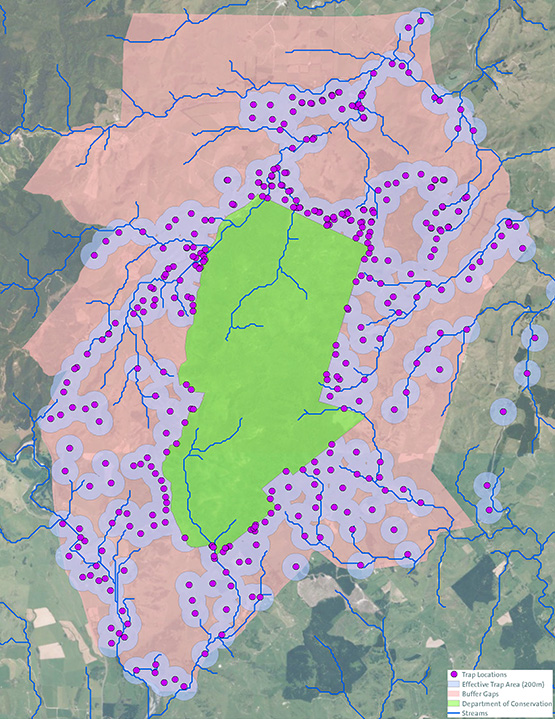The buffer zone is a critical component of the restoration work at Pukaha Mount Bruce, and a vital part of its success. The objective of the buffer zone is to prevent (or at least greatly reduce), reinvasion of pest species into the reserve. The importance of an efficient and optimised buffer zone has been highlighted by the continued incursions of ferrets into the reserve, resulting in deaths of kiwi.
Boffa Miskell's work involved a review of the current buffer zone and its success, and an analysis of other options for buffer control to determine which would be the most cost-efficient and effective. A specific component of this work addressed redesigning the buffer area to reduce ferret incursions. The recommendations emerging from this research were presented to the Board to inform decisions regarding the optional strategy for buffer control work moving forward.
Boffa Miskell developed a 10-year strategic plan for Pūkaha Mount Bruce following an in-depth review of all previous restoration work.
A key component of this work was determining the goals of the multiple groups involved in the management of the mountain. These groups include local iwi, Department of Conservation, two regional councils, the Pūkaha Mount Bruce board, TBfreeNZ, local landowners and a committed network of volunteers.
We organised workshops with all interested parties and formulated a united vision, and strategic restoration initiatives for the next ten years.
